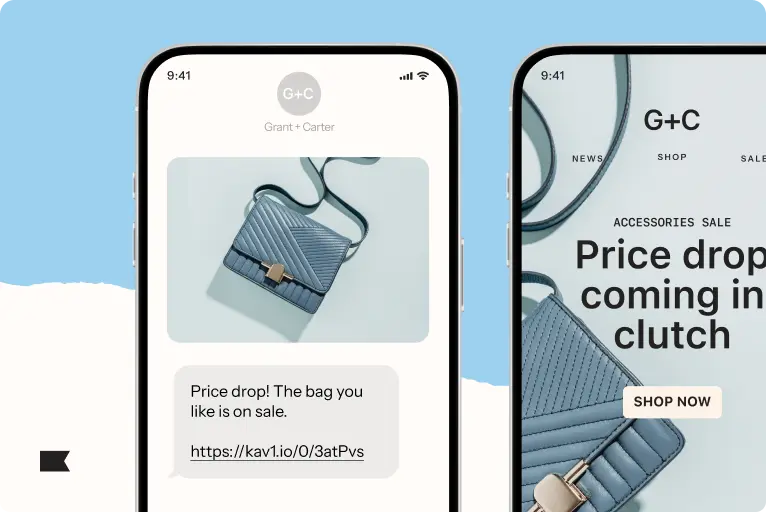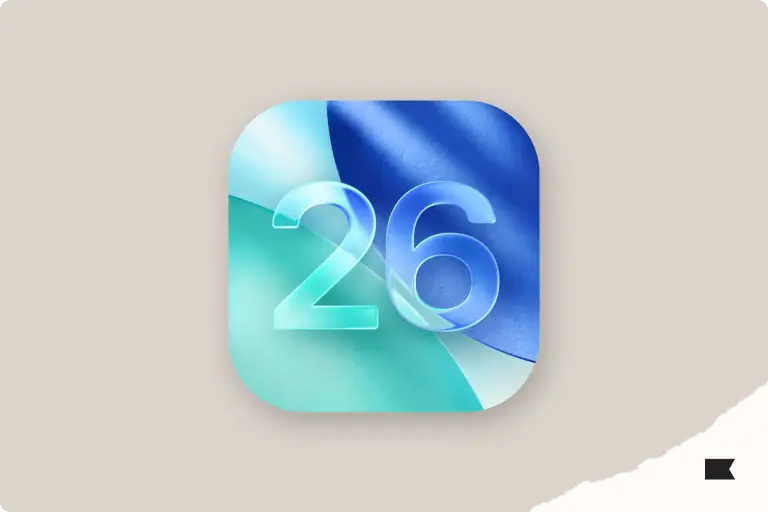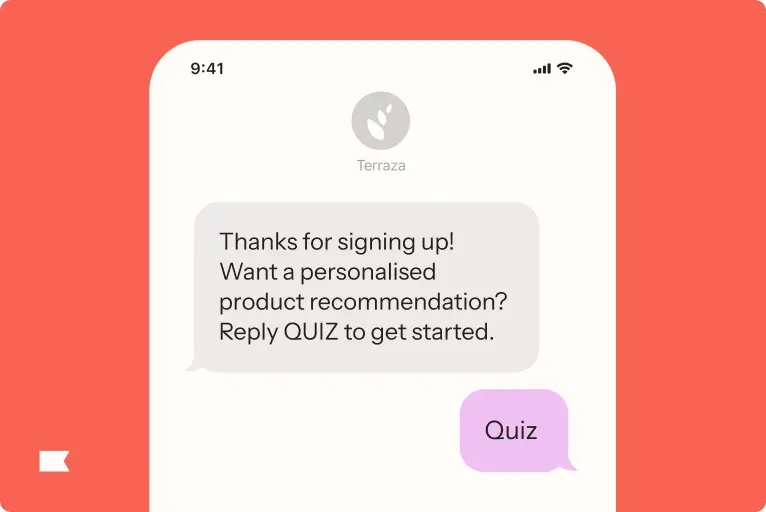
From skepticism to ROI: winning at multinational SMS marketing with Klaviyo
“I’m worried we’re going to create friction in the customer journey.”
“I’m worried we’re going to get a lot of replies saying it’s spam.”
“I’m worried people are going to unsubscribe and it’ll create bad experiences.”
These are just a few of the very real concerns marketers have expressed when I’ve suggested SMS marketing.
And, as Head of Email Marketing and Retention at FABO, I completely understand why. When it’s not done right, popping into someone’s SMS inbox can feel spammy.
In the Nordic region particularly, there’s a lot of skepticism around SMS. Many marketers think it’s intrusive, and they’re worried it’ll damage their reputation.
But most importantly, adding SMS as a new channel to the marketing mix can be a big expense for brands that haven’t seen the results yet. When you have over 100,000 email subscribers and 30,000 SMS subscribers, it can feel like a big risk to send out an SMS and cross your fingers, hoping the £2,000 you spend will bring home the revenue you want.
However, with the right approach, SMS marketing can quickly become one of your most profitable channels. The direct, immediate nature of text messaging often leads to higher engagement rates and faster conversions than traditional email campaigns.
FABO’s approach to managing SMS across countries
FABO is, first and foremost, a growth agency specialising in scaling ecommerce businesses. We’ve adopted a highly structured approach to SMS marketing that’s tailored to clients across different countries so we can make sure they’re culturally and contextually relevant.
A huge part of this is using very specific segmentation. We use country codes and preferred language inputs from sign-up forms so that SMS content is localised and meets audience expectations wherever they are (more on that in a bit).
Take CAINTÈ, for example. They’re a jewellery brand that predominantly sells men’s watches, but they also have several women’s collections.
When I took over the account, they had their SMS marketing running on a different platform to their email marketing, so it was tricky to see the core touchpoints and the data that would help me send the right message at the right time in the customer journey.
Migrating the SMS element of CAINTÈ’s marketing into Klaviyo meant I could build out different segments for their native customers vs. those living elsewhere.
This was really important because CAINTÈ’s primary business is in Denmark, but they also have smaller markets across the world, including Norway, Sweden, the UK, and Germany. Implementing the country code value in Klaviyo made it much easier for me to structure the SMS strategy for each location.
This wouldn’t have been possible if CAINTÈ was still using an external SMS tool. Bringing it all together in Klaviyo meant I could separate campaigns by location and create cohesive email and SMS flows without toggling between two platforms.
And the results were better than expected. Our first SMS had a click rate of 16.67% and drove an average order value (AOV) of €141.56.
The benefits of using Klaviyo vs. point solutions
The country code values aren’t the only benefit of using Klaviyo for SMS. The whole ecosystem is set up to create meaningful, relevant multi-channel flows that incorporate SMS, email, and other marketing outlets.
Here are a few reasons why it’s so important for me to convince my clients to switch to Klaviyo when we start running SMS campaigns.
Get unified data and insights
I touched on this earlier when I spoke about CAINTÈ, but it’s worth mentioning again.
When the jewellery brand was using another tool for SMS, they didn’t have the big-picture data available to them. They could see the spikes in revenue, but they couldn’t see what it was attributed to because they would always send an email at the same time as a text.
In reality, the only thing they could see was how many SMS messages had been sent out. They’d then have to go straight into Shopify to see if it had translated into sales. And, based on the UTM parameters in their old system, they could only get an idea of the revenue attributed to the campaign, not a solid number.
Unlike point solutions, Klaviyo brings SMS and email into a single platform. This means we can track granular data, like click rates and conversion rates, without switching between tools.
Easily integrate SMS into existing and new flows
One of the biggest advantages of using Klaviyo for SMS is that you can embed it into existing (and new) flows. We can use SMS as a strategic tool to figure out what each customer’s preferred channel is, but we can also use it to complement email campaigns and other marketing strategies.
I often think about my email inbox as an example. I have around 12,000 unread emails, so it’s hard for me to figure out what’s important. Everyone is sending out emails these days, so if you’re using SMS in the right way and throughout your flows, you have a different grab on your customers. You can reach them in a way others aren’t.
If you analyse the funnel customers are going through and structure your flows to include SMS where it makes sense, you can make sure your emails aren’t being “overwritten” by all the other brands bidding for attention in email inboxes.
💡 Klaviyo will soon support RCS (Rich Communication Services), which many point solutions don’t offer. This will enable you to send richer, more engaging messages with features like verified branded SIDs, high-resolution media, and interactive elements—all while maintaining SMS as a fallback for devices that don’t support RCS.
Accurately attribute sales
One major issue with using separate SMS and email platforms is double attribution, where revenue gets wrongly assigned to multiple channels. Klaviyo eliminates this by automatically identifying the most influential channel, making sure you get a clear, accurate view of which messages actually drove conversions—something that’s pretty much impossible with disconnected tools.
Send the right messages at the right time
There’s a higher chance of accidentally messaging the same person twice when using separate SMS and email solutions, leading to unnecessary costs and a frustrating customer experience.
Klaviyo’s smart sending rules stop you from over-messaging by intelligently coordinating messages across channels so customers receive the right message at the right time through the most effective medium.
Automatically comply with local SMS laws
SMS regulations vary by country, from opt-in requirements to quiet hours and carrier filtering rules. Klaviyo automatically applies compliance rules so your messages are delivered in a way that meets local regulations without you having to become an expert in global SMS laws.
See real-time engagement metrics
SMS often drives immediate engagement.
Norwegian brand Caspara is a good example of this in action. Like CAINTÈ, they were originally using a different SMS platform. After convincing them to bring the channel into Klaviyo so we could have all the data together, things really ramped up.
As soon as I sent the first SMS in Klaviyo, I refreshed the page and saw instant revenue and engagement. Klaviyo gives you a real-time view of what’s happening with each text message so you can make quick adjustments and respond to what’s happening in the moment.
Overall, that first Caspara SMS generated a 21.16% click rate and an AOV of 1481.40 NOK. The revenue per recipient on this first SMS was 154% higher than any email sent out during that period.
SMS encoding and cost considerations
Multinational SMS marketing has plenty of potential, but there are some things to bear in mind.�
For example, when using special characters like accents or emojis, the character limit per segment drops from 160 to 70 due to UCS-2 encoding, which increases costs. It’s important to be aware of this when localising your SMS messages for different markets.
7 best practices for multinational SMS marketing
SMS marketing has its fair share of challenges. With multiple destinations, it gets even more complicated. You’re juggling different languages, different cultural norms, and different customer expectations.
Here’s how I handle campaigns that span multiple countries and languages.
1. Use localisation to segment SMS subscribers
I once worked with a client that had all their European markets in one Klaviyo account. As well as operating in Denmark and other Nordic countries, they were also targeting Australia. Naturally, the Danish customers wanted Danish or European-English communication, and the Australian customers preferred Australian-English.
To tackle this, I made sure all the segments were up to date in terms of location by looking into and creating valuable segments based on their country code.
Obviously, you don’t know if someone has a Danish number and speaks English—that’s maybe an important nuance. But we can assume that someone with a Danish number prefers to speak Danish.
And you can create a safety net around this, too: you can ask people for their preferred language on your sign-up forms and then segment them based on that.
2. Frame SMS as something great for better retention
One of my favourite ways to use SMS is for retention. I always want to make sure we’re continuously re-engaging those who have previously purchased and creating long-term relationships outside the email inbox.
For one client, I created a targeted on-site sign-up form that asked consumers to be part of something bigger. It framed becoming an SMS subscriber as an advantage.
You can offer a more tangible advantage, too, like 5% off someone’s first purchase or a gift card when someone signs up to receive text messages.
On many occasions, a customer is already subscribed to email but is no longer engaged on that channel. Maybe they haven’t opened an email in a while or haven’t clicked through. In these cases, you can re-engage shoppers on SMS and explore a new way of communicating with them—who knows, they might prefer a text message to an email.
3. Avoid customer friction
Creating cross-channel campaigns via email and SMS can be hard to navigate if there’s overlap. For example, if you send an SMS to someone who’s just purchased a product via email, you’re going to create friction.
It’s a good idea to create a segment of shoppers who have placed an order in the last X amount of days. This means they won’t get frustrated over potential discounts they didn’t cash in on, or annoyed that you’re promoting a product they already own.
4. Find your unique voice and sender persona
One of the most important things about working with both email and SMS is knowing who you’re communicating with. You need to know your buyer persona—who your ideal customer is, including their demographic info, interests, and buying preferences.
Another important thing is knowing your sender persona—who you want to show up as in people’s SMS inboxes.
Because SMS gives you less flexibility with word count, you don’t have the space within every text message to explain to your subscribers who you are. So, you need to figure out who you want to be in the SMS inbox. Do you want to be the brand that always has a good deal? Do you want to be the one that adds value? Do you want to be the one that always inspires?
Finding your unique voice and how you want to use SMS as a channel will keep your messaging consistent. Because—and here’s the key thing—when a customer opens a text, all the historic messages from your brand pop up, too. It’s easy to scroll and think, “This is a lot of spam.” The key is figuring out how to use your sender persona to stop people from unsubscribing.
5. Incorporate time sensitivity
Campaigns tied to urgency, like limited-time sales, consistently deliver the highest ROI. I like to use SMS to amplify these moments.
I run a lot of single-day sale campaigns for clients, whether it’s Black Friday, a new product drop, or something else. I’ve found that time-sensitive messages that include some sort of scarcity messaging tend to perform better.
The hard part is getting shoppers to act quickly when you only have a few characters available to tell them why they should act with haste. It’s a pretty high-level task trying to make sure what you’re putting in each SMS actually makes sense and drives people to act.
The Caspara SMS I mentioned earlier is a prime example of how I’ve used scarcity and urgency to drive sales. The click rate of 21% is way higher than the norm, and the placed order rate of 119% are both way higher than the norm.
6. Integrate strategies across channels
SMS isn’t an island, and it shouldn’t be used in isolation. It’s just one cog in a much bigger machine.
For best results, combine SMS with email and other marketing channels. For example, you might use email for early-access offers and SMS for real-time announcements to improve campaign performance without oversaturating any one channel.
I ran a pre-access email for Venderby’s last Black Friday. The pre-access started 2 hours before the official week of Black Friday/Cyber Monday. Anyone who hadn’t opened or purchased via email received an SMS inviting them to shop now.
We sent this SMS to the brand’s global audience in 3 different languages. The first email led to a huge spike in sales, and the follow-up SMS drove another significant spike, with a click rate of 12.58% and a revenue per recipient that was 240% higher than the emails sent out during that period.
All this to say, it’s worth experimenting with the number of SMS messages you send in a campaign to learn how they work alongside your emails.
7. Build trust with branded links
Creating trust with SMS can be harder than other marketing channels, but I’ve found Klaviyo’s branded SMS short links invaluable in establishing credibility. It makes SMS look less spammy, which is always one of the biggest concerns my clients have.
Just creating a branded short link can change the way shoppers think about your brand—and it’s easy to set up.
SMS is a powerful channel when you use it the right way
When you use it thoughtfully, SMS can be a very profitable addition to multinational marketing strategies. You can quickly overcome ingrained scepticism and build trust by focusing on localisation and personalisation, so each customer has a unique journey regardless of where they’re based.
The key is to treat SMS as part of a holistic customer journey, not just an isolated tactic. It can’t live in a vacuum. It works best as a way to enhance your existing marketing efforts.
The best part: SMS provides unique opportunities to connect with your audience in a more immediate and personal way—a real bonus when you’re competing with hundreds (or thousands) of other emails.
But to do all this, you need a platform that brings together your marketing channels in one place. It’s no good toggling between platforms trying to decipher which message led to which sales.
With Klaviyo, you can deliver impactful, culturally relevant messages to the right people in the right countries—and see their results immediately.

Related content

Discover 6 key factors to choose the best SMS marketing platform covering integrations, compliance, AI, and pricing to power smarter customer journeys.

Inbox filtering, AI summaries, RCS, and link tracking changes are coming. Use Klaviyo to adapt quickly and keep your SMS strategy strong.

Learn how to use conversational SMS features and strategies to enhance customer engagement and boost sales with personalised, automated messaging.